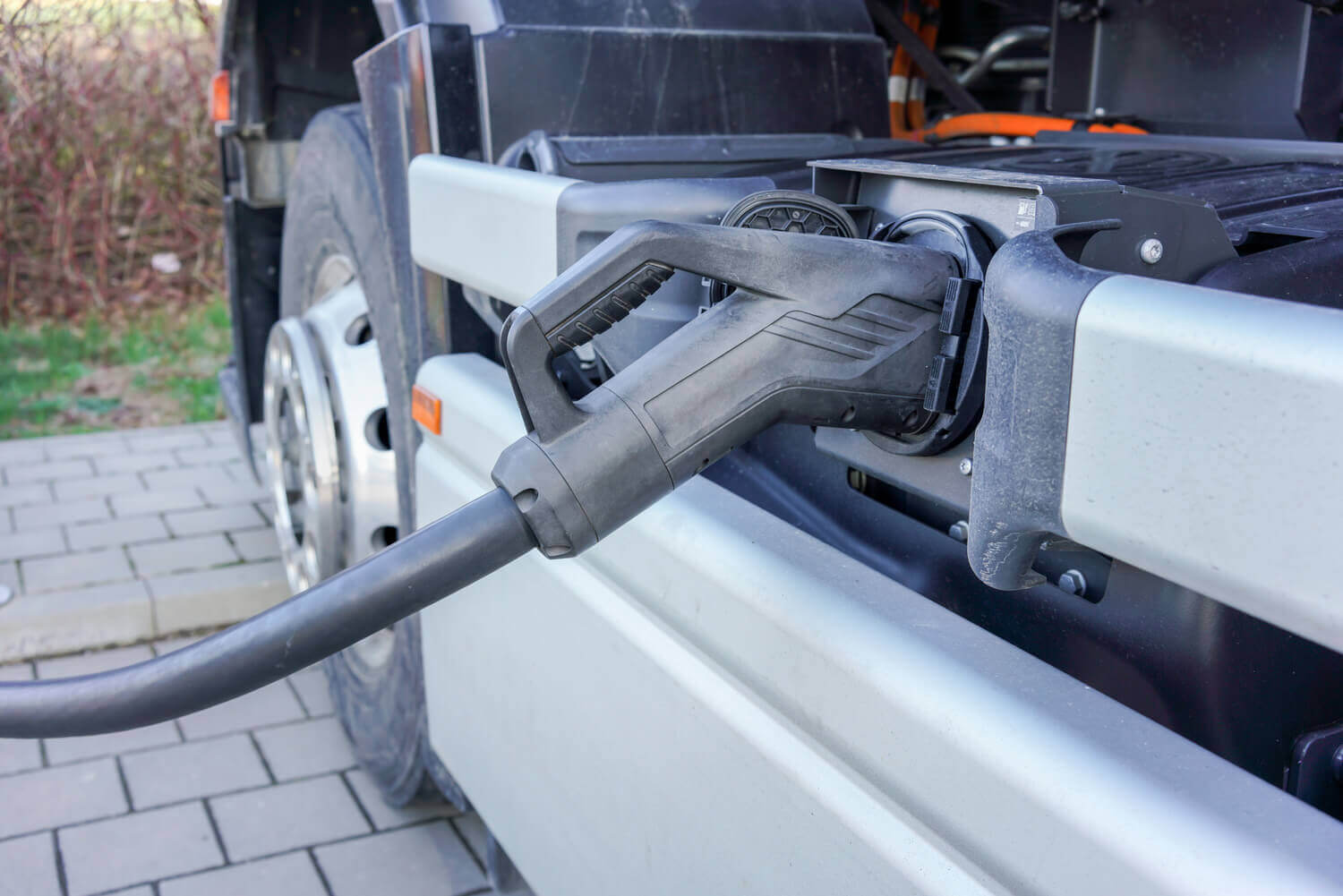New guidelines for public HGV charging points


The British Standards Institution (BSI) has published a new set of recommendations to support the development of high-power charging infrastructure for battery electric heavy goods vehicles (HGVs) in the UK. The document, titled "BSI Flex 2071 v2.0:2025-01," provides detailed guidelines to ensure the safe, efficient, and accessible design and operation of publicly available charging sites as part of the country's transition to zero-emission road freight. The UK is on track to phase out the sale of new petrol and diesel light-duty vehicles by 2035.
However, the shift to zero-emission HGVs is still in its early stages. The government has committed to ending the sale of non-zero-emission trucks under 26 tonnes by 2035 and all new non-zero-emission HGVs by 2040. This aligns with the country's goal to achieve net-zero emissions in the road freight sector by 2050.
The recommendations build on the government's Zero Emission HGVs and Infrastructure Demonstrators (ZEHID) programme, which funds large-scale trials of battery electric and hydrogen fuel cell HGV technologies. The document aims to provide stakeholders with the tools and standards necessary to support the rollout of a UK-wide charging network. Key recommendations
- Charging sites should be accessible to all suitable vehicles, regardless of manufacturer.
- Site layouts should minimize risks to drivers and pedestrians, with design features such as drive-through charging bays to avoid reversing.
- Clear separation of charging zones for HGVs and other vehicles, such as cars and vans, is encouraged.
- Safety Measures:Charging infrastructure must adhere to strict electrical and fire safety standards.
- Risk assessments should account for potential hazards, including vehicle collisions and pedestrian movement.
- Driver Welfare:Charging sites should include amenities such as toilets, refreshments, and rest areas for drivers, especially for long-haul journeys requiring extended stops.
- Harmonization and Interoperability:The document emphasizes the need for consistent design and operational standards across the UK to ensure interoperability between different sites and systems.
- Integration of Multi-Fuel Sites:For sites combining electric and traditional fuel types, additional safety measures are required, including managing risks related to fuel leaks and ignition sources.
Chris Ashley, the RHA's Net Zero policy lead, welcomed the publication, stating:
"We know that hauliers and coach operators will want to charge their vehicles en route at truck stops and motorway service areas.
With the publication of these standards, another important piece of the Net Zero jigsaw puzzle falls into place to allow operators and charge point providers to plan for this provision."
Despite the progress in electric truck development, the adoption of zero-emission HGVs remains hindered by high vehicle costs, range limitations, and inadequate charging infrastructure. The BSI's guidelines aim to address these challenges by providing a clear framework for the design and operation of charging sites.
Standardised approach to key factors
The document underscores the importance of creating a robust charging network to accelerate the adoption of zero-emission HGVs. By prioritizing safety, accessibility, and interoperability, the recommendations aim to pave the way for a more sustainable road freight sector in the UK.
The "BSI Flex" also sets out a standardised approach to key factors such as:
- Vocabulary and units of measurement.
- Charging site layouts and public access.
- Segregation between vehicle types (HGVs, PSVs, vans).
- Interaction between vehicles and pedestrians.
- Safety and design implications of charging sites.
This BSI Flex will be of interest to logistics providers, electrical grid suppliers, consumer groups, and other stakeholders in the charging site ecosystem.
For more information, the full document, "BSI Flex 2071 v2.0:2025-01," is available from the British Standards Institution.